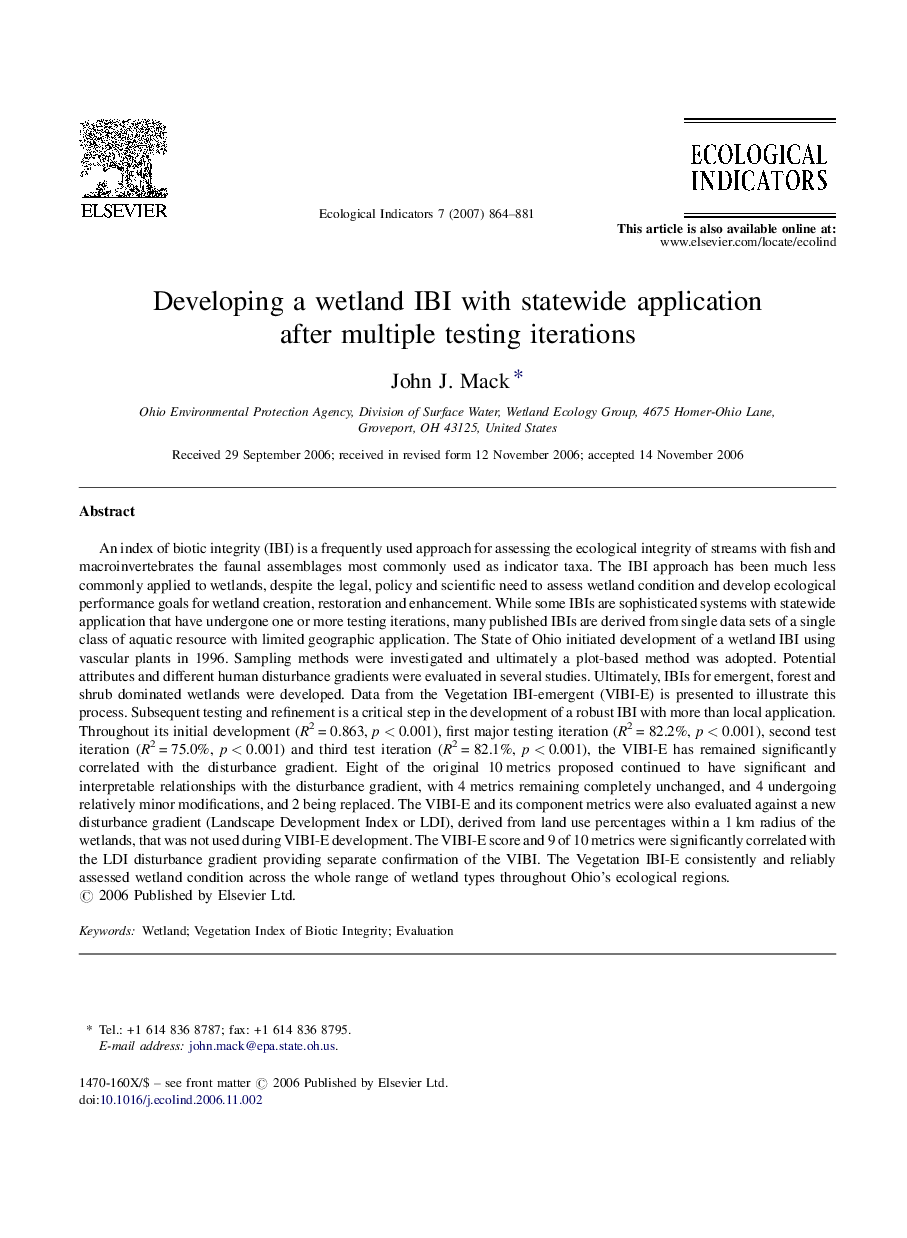| کد مقاله | کد نشریه | سال انتشار | مقاله انگلیسی | نسخه تمام متن |
|---|---|---|---|---|
| 4374661 | 1303186 | 2007 | 18 صفحه PDF | دانلود رایگان |

An index of biotic integrity (IBI) is a frequently used approach for assessing the ecological integrity of streams with fish and macroinvertebrates the faunal assemblages most commonly used as indicator taxa. The IBI approach has been much less commonly applied to wetlands, despite the legal, policy and scientific need to assess wetland condition and develop ecological performance goals for wetland creation, restoration and enhancement. While some IBIs are sophisticated systems with statewide application that have undergone one or more testing iterations, many published IBIs are derived from single data sets of a single class of aquatic resource with limited geographic application. The State of Ohio initiated development of a wetland IBI using vascular plants in 1996. Sampling methods were investigated and ultimately a plot-based method was adopted. Potential attributes and different human disturbance gradients were evaluated in several studies. Ultimately, IBIs for emergent, forest and shrub dominated wetlands were developed. Data from the Vegetation IBI-emergent (VIBI-E) is presented to illustrate this process. Subsequent testing and refinement is a critical step in the development of a robust IBI with more than local application. Throughout its initial development (R2 = 0.863, p < 0.001), first major testing iteration (R2 = 82.2%, p < 0.001), second test iteration (R2 = 75.0%, p < 0.001) and third test iteration (R2 = 82.1%, p < 0.001), the VIBI-E has remained significantly correlated with the disturbance gradient. Eight of the original 10 metrics proposed continued to have significant and interpretable relationships with the disturbance gradient, with 4 metrics remaining completely unchanged, and 4 undergoing relatively minor modifications, and 2 being replaced. The VIBI-E and its component metrics were also evaluated against a new disturbance gradient (Landscape Development Index or LDI), derived from land use percentages within a 1 km radius of the wetlands, that was not used during VIBI-E development. The VIBI-E score and 9 of 10 metrics were significantly correlated with the LDI disturbance gradient providing separate confirmation of the VIBI. The Vegetation IBI-E consistently and reliably assessed wetland condition across the whole range of wetland types throughout Ohio's ecological regions.
Journal: Ecological Indicators - Volume 7, Issue 4, November 2007, Pages 864–881